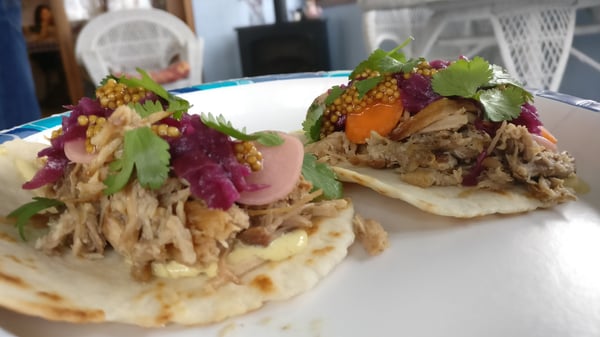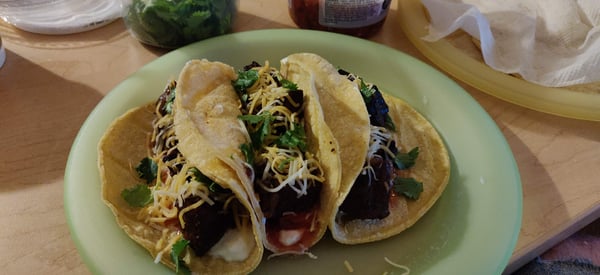Tacos, with their tantalizing blend of flavors and textures, have become a beloved staple in American cuisine. But these delicious handheld delights have a rich and diverse history that dates back centuries, originating in the heart of Mexico and making their way to the United States through a journey of culture, innovation, and migration. In this blog post, we'll take a journey through time to explore the fascinating history of tacos and their evolution into an iconic American favorite.

Ancient Origins in Mexico
The origins of tacos can be traced back to the ancient civilizations of Mexico, where indigenous peoples enjoyed a diet primarily centered around maize (corn) as a staple crop. The ancient Aztecs are credited with using tortillas, made from ground maize, as a versatile base for various foods. These early iterations of tortillas were used as a vessel to hold ingredients like fish, insects, and other locally available proteins.
The term "taco" itself derives from the Nahuatl language, spoken by the Aztecs, and it referred to the practice of wrapping food in tortillas. However, the taco as we know it today wasn't fully developed at this stage; it was a precursor to the diverse range of tacos we enjoy today.

Evolution and Diversification
As Spanish conquistadors arrived in Mexico in the 16th century, they introduced new ingredients such as beef, pork, and cheese. These ingredients were integrated into the indigenous cuisine, leading to the evolution of traditional Mexican dishes, including the taco. Over time, tacos diversified with the inclusion of various fillings, salsas, and spices, reflecting the rich culinary heritage of Mexico's different regions.
The Journey to America
The story of how tacos made their way to America is closely tied to Mexican migration and cultural exchange. Tacos initially crossed the border into the United States through Mexican workers who came seeking better economic opportunities. The first known reference to tacos in America dates back to the late 19th century in the city of San Antonio, Texas, where Mexican street vendors sold tamales and tacos to both Mexican and American residents.
However, the true popularization of tacos in America can be attributed to the rise of fast food culture in the mid-20th century. Glen Bell, the founder of Taco Bell, is often credited with introducing tacos to a broader American audience. Bell adapted traditional Mexican flavors into a fast-food format, catering to the American palate while retaining some elements of authentic Mexican cuisine.
Modern Tacos in America
As the years went by, tacos began to shed their fast-food image and embrace their authentic roots. People started to appreciate the diversity and complexity of Mexican cuisine, leading to the emergence of gourmet taco trucks, taquerias, and upscale restaurants that celebrate traditional flavors and techniques. This trend not only diversified the types of tacos available but also emphasized the use of fresh, locally sourced ingredients.
Where it Ends… Until your Next Taco
The journey of tacos from their humble origins in ancient Mexico to becoming a beloved American culinary delight is a testament to the power of cultural exchange, migration, and innovation. As you savor your next taco, remember that you're indulging in a rich history that spans centuries and continents. Whether it's a traditional street taco or a modern fusion creation, each bite encapsulates the flavors and stories of a vibrant culinary heritage.
- Tacos de Carne Asada (Grilled Flank Steak) with Grilled Onions, Cilantro and Queso Fresco: North
- Al Pastor (Pork)-Inspired Tacos with Charred Jalapeño-Grilled Pineapple Salsa: Central
- Achiote Fish Tacos with Lime Crema, Red Cabbage and Grilled Avocados: Coast
- Elotes (Mexican Street Corn with Mayo, Lime, Chili and Cheese)
